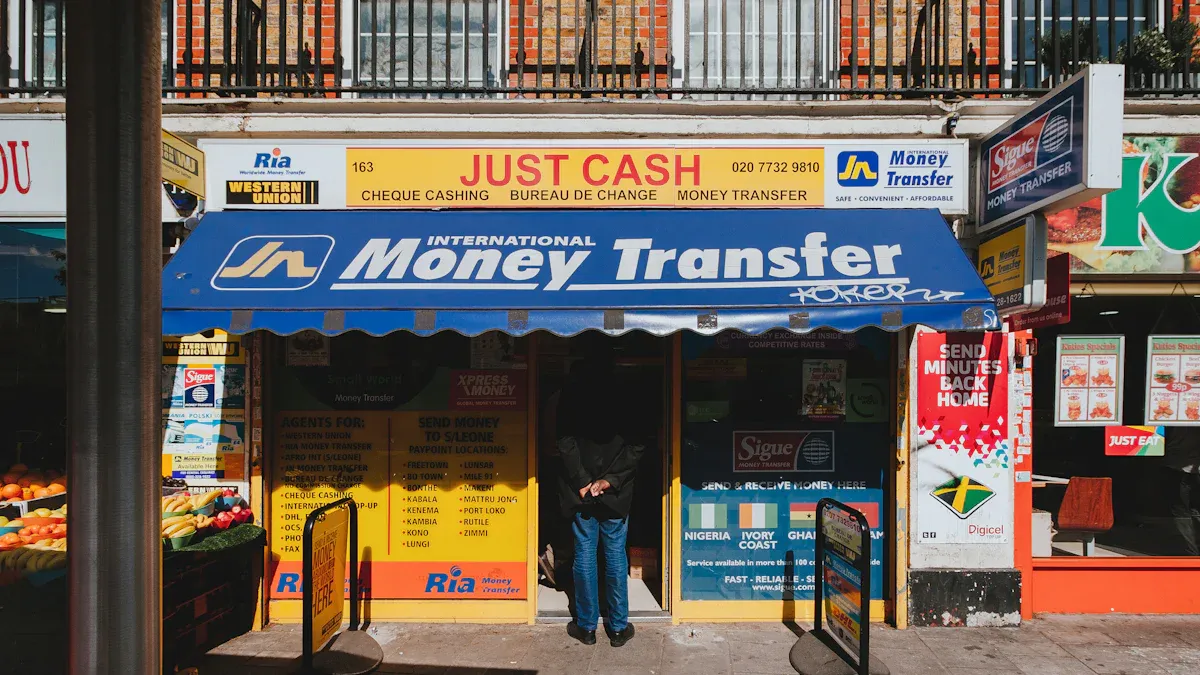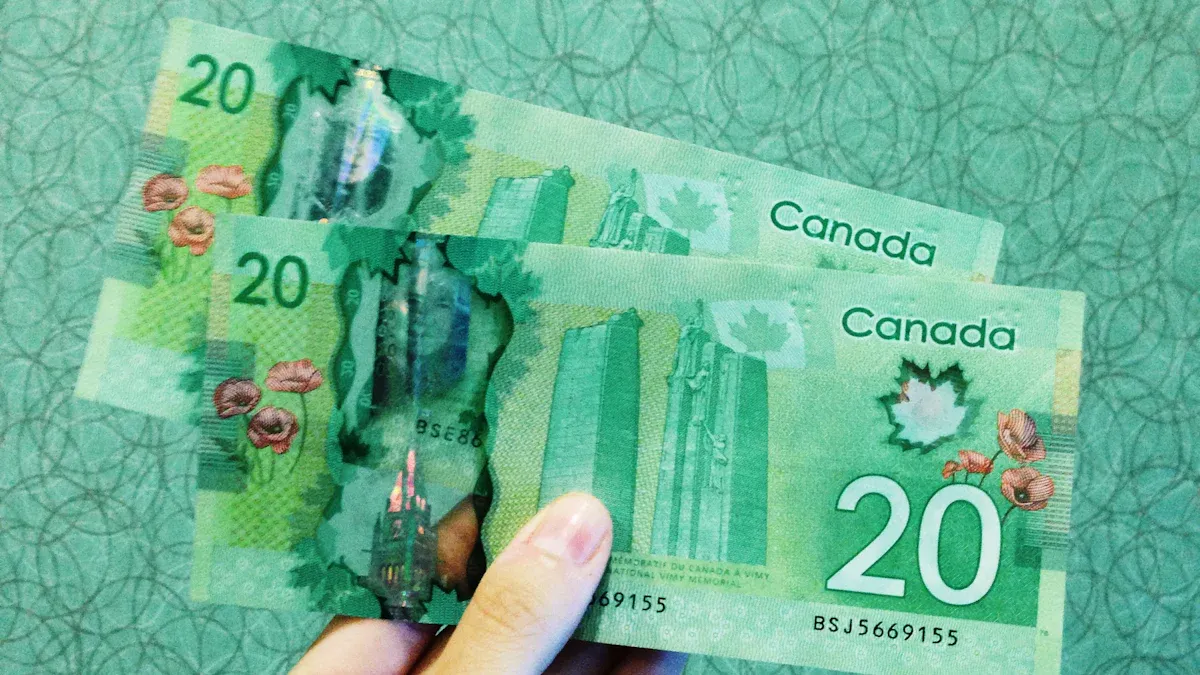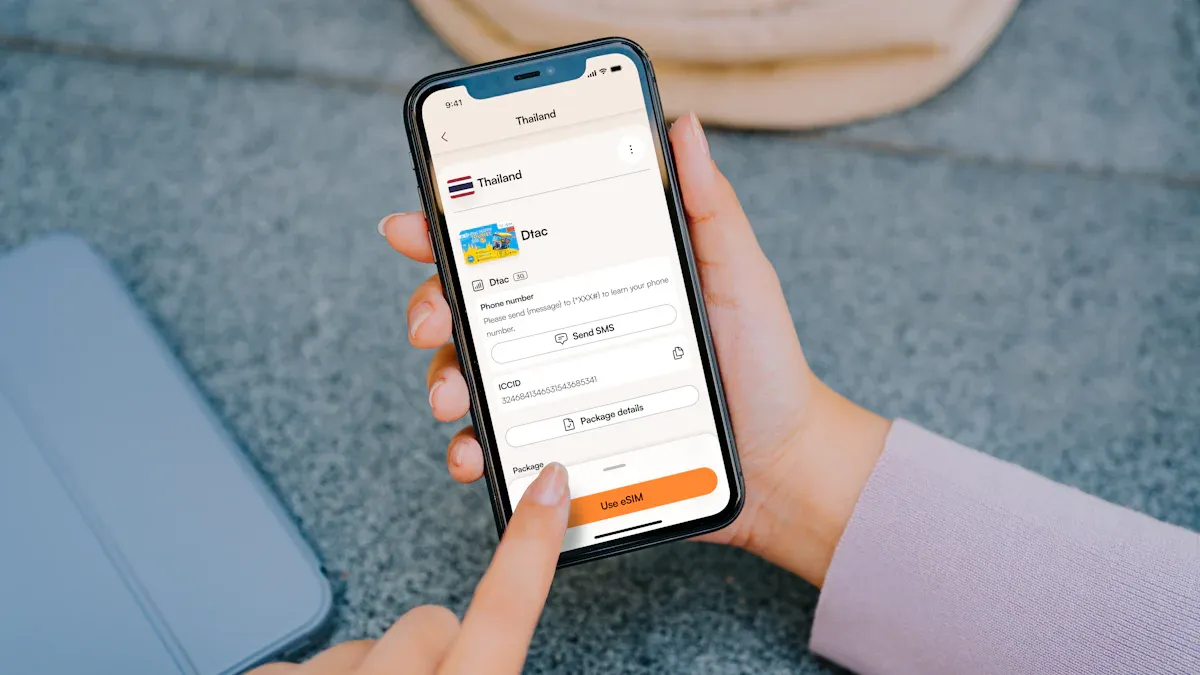- EasyCard
- Trade
- Help
- Announcement
- Academy
- SWIFT Code
- Iban Number
- Referral
- Customer Service
- Blog
- Creator
How to Remit Money from Canada to Pakistan? Understand the Tax Implications, Service Options, and Remittance Steps

Image Source: unsplash
You have multiple ways to complete a remittance from Canada to Pakistan, with online services typically being the most cost-effective choice.
For personal small gifts, tax implications are usually minimal. However, when dealing with large amounts, you need to be more cautious, ensure compliance, and consider consulting a tax professional.
Key Points
- Online remittance services are typically the best choice for sending money from Canada to Pakistan, offering low fees, good exchange rates, and fast delivery.
- Before sending, choose a suitable remittance service and prepare the recipient’s complete information, especially the bank account number (IBAN).
- The Pakistani government encourages receiving overseas remittances and offers tax exemptions, but large transfers may require proof of funds’ source.
- The Canada Revenue Agency (CRA) monitors large fund flows, with international transfers over CAD 10,000 reported to FINTRAC, but this is a routine process unrelated to personal income tax.
- When sending money, carefully verify all information to avoid delays or errors and keep transfer records.
Comparing and Choosing Remittance Methods

Image Source: unsplash
Choosing the right remittance method is the first step to a successful transfer. Different methods vary in fees, speed, and convenience. Below, we compare several mainstream remittance methods in detail to help you make the best choice.
Online Remittance Services
For most people, online remittance services are the most cost-effective option. Companies like Wise, Remitly, and Paysend specialize in international transfers, typically offering better exchange rates and lower fees.
The core advantages of these services include:
- Transparent Fees: You can see all fees and the final received amount before sending.
- Better Exchange Rates: They often use rates close to the mid-market rate, making your money go further.
- Fast Delivery: Many transfers can be completed in minutes or hours.
To give you a clearer picture, here’s a comparison of sending CAD 1,000 to Pakistan using different services:
| Provider | Exchange Rate (1 CAD) | Transfer Fee | Recipient Receives (Approx.) |
|---|---|---|---|
| Wise | 200.675 PKR (mid-market rate) | 9.57 CAD | 198,754.54 PKR |
| Remitly | 197.944 PKR | 0.00 CAD | 197,944.14 PKR |
What is the Mid-Market Rate? Services like Wise use the mid-market rate, which is essentially the same as the rate you see on Google. They charge only a transparent service fee without hiding profits in the exchange rate.
Speed is another key consideration. Depending on your payment method, delivery times can range from instant to a few days.
| Provider | Payment Method | Typical Transfer Speed |
|---|---|---|
| Wise | Card or Bank Transfer | Most transfers complete within 24 hours, with popular routes as fast as 30 minutes |
| Remitly (Express) | Debit/Credit Card | Usually instant |
| Remitly (Economy) | Bank Account Transfer | 3 to 5 business days |
Additionally, services like Paysend offer great flexibility, allowing recipients to receive funds via bank cards, bank accounts, or digital wallets.
Traditional Bank Wire Transfers
Sending money through your bank (e.g., TD, RBC, CIBC) via international wire transfer is a traditional and reliable method. If you’re accustomed to banking transactions, this may seem convenient.
However, this convenience often comes with high costs. The main drawbacks of bank wire transfers are:
- High Fees: Banks typically charge fixed wire transfer fees, generally between CAD 25 to 50.
- Poorer Exchange Rates: Banks add a markup (2%-6%) to the market rate, meaning you get fewer Pakistani Rupees for your converted funds.
For example, at TD Bank, the daily limit for international wire transfers via online banking is around CAD 6,500. While some premium accounts may offer fee waivers, for most regular users, sending small amounts from Canada to Pakistan via banks is not cost-effective.
Note: Beyond the fees you pay, intermediary or recipient banks may charge additional fees, further increasing the total cost.
Cash Remittance Agents
If your recipient in Pakistan lacks a bank account or prefers receiving cash, Western Union and MoneyGram are excellent choices.
The biggest advantage of this method is its extensive offline agent network. You can pay with cash or a card at a Canadian agent location, and the recipient can collect cash at any partner location in Pakistan with ID and a pickup code.
This convenience comes at a cost, as fees are typically higher and exchange rates less favorable than online services. It’s best suited for scenarios requiring cash pickup.
Other Remittance Methods
Beyond the mainstream methods, other options are worth exploring.
- Prepaid Cards: You can use certain Canadian-issued Visa or MasterCard prepaid cards for international transfers via supported platforms (e.g., Wise). Not all prepaid cards support international transactions, so confirm with the issuer. Mastercard’s partnerships with fintech companies (e.g., Mastercard Move) are also making cross-border payments more convenient.
When choosing a remittance method, compare total costs (fees + exchange rate losses) and delivery speed to find the best fit for your needs.
Sending Money from Canada to Pakistan: Step-by-Step Guide

Image Source: unsplash
Once you understand the different remittance methods, the actual process is straightforward. Most online services optimize user experience for clarity. Below, we break down the process of sending money from Canada to Pakistan into four simple steps.
Step 1: Choose a Service and Register
Choosing the most suitable service is the first step to a successful transfer. Before deciding, use online comparison platforms like RemitAnalyst. These tools help you:
- Aggregate data from multiple providers.
- Compare exchange rates, fees, and estimated delivery times in real time.
- Calculate the final amount in Pakistani Rupees.
After comparing and selecting a provider, you need to create an account. Under Canadian regulations, all financial service providers must verify your identity to prevent money laundering. Prepare for identity verification.
What’s Needed for Identity Verification? Per Financial Transactions and Reports Analysis Centre of Canada (FINTRAC) regulations, online providers typically verify identity using one or more of the following:
- Government-Issued Photo ID: Provide a valid Canadian federal, provincial, or territorial ID (or equivalent foreign ID), verified via selfie or live video.
- Credit File Information: Providers check your Canadian credit bureau record, typically requiring at least three years of history.
- Dual Process Verification: Verify your personal information through two reliable sources, such as name, address, and bank account details.
Step 2: Prepare Necessary Information
To ensure funds reach the recipient accurately, prepare the following information in advance. Inaccurate information is the most common cause of transfer delays or failures.
- Recipient’s Full Name: Must match their bank account name exactly.
- Recipient’s Address: Complete residential address.
- Recipient’s Bank Information: The most critical part. For transfers to a Pakistani bank account, you typically need the International Bank Account Number (IBAN).
Understanding Pakistan’s IBAN Pakistan’s IBAN consists of 24 characters, containing all necessary routing information. A standard Pakistani IBAN format looks like:
PK36 SCBL 0000 0011 2345 6702
- PK: Country code
- 36: Check digits
- SCBL: Bank code
- 0000001123456702: Individual bank account number
Strongly recommend obtaining the IBAN directly from the recipient, who can request it from their bank. Providing the correct IBAN significantly reduces the risk of transfer errors.
Step 3: Create a Transfer Order
With all information ready, log into your chosen provider’s website or app to create your transfer order. The process is typically intuitive.
- Enter Amount: Input the CAD amount you wish to send or the PKR amount you want the recipient to receive. The system will display the exchange rate, fees, and final received amount.
- Select Recipient: Choose from a saved recipient list or add a new recipient, entering the name and bank details (IBAN) prepared in the previous step.
- Choose Payment Method: Select how to fund the transfer. Canadian online services typically support multiple payment methods, such as:
- Interac e-Transfer: A popular and fast payment method.
- Debit Card: Direct deduction from your bank account.
- Direct Debit: Authorize the provider to withdraw funds from your bank account.
- Wire Transfer: Suitable for large transfers but slower and more expensive.
- Review and Confirm: The system will show a summary of transfer details, including amount, exchange rate, fees, and recipient information. Double-check everything for accuracy before confirming.
Step 4: Pay and Track
After confirming the order, complete the payment based on your chosen method. For example, if you selected Interac e-Transfer, log into your online banking and send the specified amount to the provider’s email address.
Once the provider receives your funds, they will begin processing the international transfer. You can track the transfer status via:
- App or Website: Most providers update transfer status in real time on your account dashboard, e.g., “Pending Payment,” “Processing,” or “Received.”
- Email or Text Notifications: Providers send updates on key stages to you and the recipient.
Some Pakistani banks, like MCB Bank and Allied Bank, offer their own “remittance tracker” services, allowing recipients to check fund status locally. Typically, a successful transfer from Canada to Pakistan completes within hours to a couple of days.
Tax Implications and Compliance Requirements
Understanding tax and compliance requirements is crucial when sending international transfers. This helps avoid unnecessary issues and ensures funds arrive smoothly. Below, we explore the tax and regulatory considerations for sending money from Canada to Pakistan.
Canadian Tax Considerations
In Canada, funds used for transfers must be from your after-tax income. The good news is that personal gift transfers are generally not considered taxable events in Canada. You don’t need to pay additional taxes on money gifted to family.
However, the Canada Revenue Agency (CRA) may monitor large or unusual fund flows. To ensure compliance, you should:
- Keep Records: Retain all transfer receipts to prove the funds’ legitimacy.
- Maintain Consistency: Ensure your tax filings align with your financial activities.
If your financial situation is complex, such as holding over CAD 100,000 in foreign assets, you may have additional reporting obligations (e.g., Form T1135). For large transfers, consulting a tax professional is always wise.
Pakistani Tax Regulations
The Pakistani government encourages remittances through legal channels and offers significant tax incentives, a major benefit for recipients.
Key Tax Exemption Policy According to the Federal Board of Revenue (FBR), foreign remittances received through official channels like banks are exempt from income tax. Annual remittances up to PKR 5 million require no explanation of funds’ source.
If annual receipts exceed PKR 5 million, the FBR may require proof of the funds’ source. As long as you can prove the funds come from legitimate overseas remittances (e.g., providing a bank-issued receipt), the funds remain tax-exempt. Only unexplained excess amounts may be treated as taxable income.
Large Transfers and FINTRAC
When sending large amounts from Canada to Pakistan, you may encounter FINTRAC. FINTRAC is Canada’s Financial Transactions and Reports Analysis Centre, responsible for combating money laundering and terrorist financing.
Per regulations, any single or 24-hour cumulative international transfer of CAD 10,000 or more must be reported to FINTRAC by your financial service provider (e.g., bank or Wise).
What does this mean for you?
- Routine Process: This is a standard legal requirement and doesn’t mean you’re under scrutiny.
- Non-Tax Purpose: FINTRAC reports are primarily for anti-money laundering, not directly related to your personal income tax.
- Keep Records: Retain all transaction records for at least five years for potential inquiries.
Understanding these regulations helps you handle large transfers with confidence.
Sending money from Canada to Pakistan via online services is the smart choice in most cases, as they are faster and cheaper.
While personal small gifts have minimal tax implications, seeking professional tax advice is crucial for large or complex transactions. For example, Canada and Pakistan have a double taxation avoidance agreement, highlighting the importance of compliance.
The key to a successful transfer lies in:
- Comparing Services: Find the best fees and exchange rates.
- Preparing Information: Ensure recipient details are accurate.
- Understanding Regulations: Comply with both countries’ requirements.
FAQ
What’s the fastest way to send money from Canada to Pakistan?
The fastest method is typically using the “Express” option of online services, paying with a debit or credit card. For example, Remitly’s Express service can deliver funds to the recipient in minutes.
How can I maximize savings on transfer fees?
You can take these steps to save on fees:
- Prioritize online services like Wise or Remitly, which typically offer better fees and rates than banks.
- Use online comparison tools to check real-time total costs across providers.
- Choose lower-cost payment methods, like bank transfers instead of credit cards.
What if the recipient in Pakistan doesn’t have a bank account?
You can choose services supporting cash pickups. Western Union and MoneyGram have extensive agent networks in Pakistan, allowing recipients to collect cash with valid ID and a pickup code.
Can I cancel a transfer if I entered incorrect recipient information?
Most services allow cancellation before the transfer is completed.
You need to immediately log into your account or contact customer service. If the funds have been received by the recipient’s bank, cancellation may be difficult or incur additional fees. Therefore, double-check all information before sending.
*This article is provided for general information purposes and does not constitute legal, tax or other professional advice from BiyaPay or its subsidiaries and its affiliates, and it is not intended as a substitute for obtaining advice from a financial advisor or any other professional.
We make no representations, warranties or warranties, express or implied, as to the accuracy, completeness or timeliness of the contents of this publication.




Contact Us
Company and Team
BiyaPay Products
Customer Services
is a broker-dealer registered with the U.S. Securities and Exchange Commission (SEC) (No.: 802-127417), member of the Financial Industry Regulatory Authority (FINRA) (CRD: 325027), member of the Securities Investor Protection Corporation (SIPC), and regulated by FINRA and SEC.
registered with the US Financial Crimes Enforcement Network (FinCEN), as a Money Services Business (MSB), registration number: 31000218637349, and regulated by FinCEN.
registered as Financial Service Provider (FSP number: FSP1007221) in New Zealand, and is a member of the Financial Dispute Resolution Scheme, a New Zealand independent dispute resolution service provider.



















